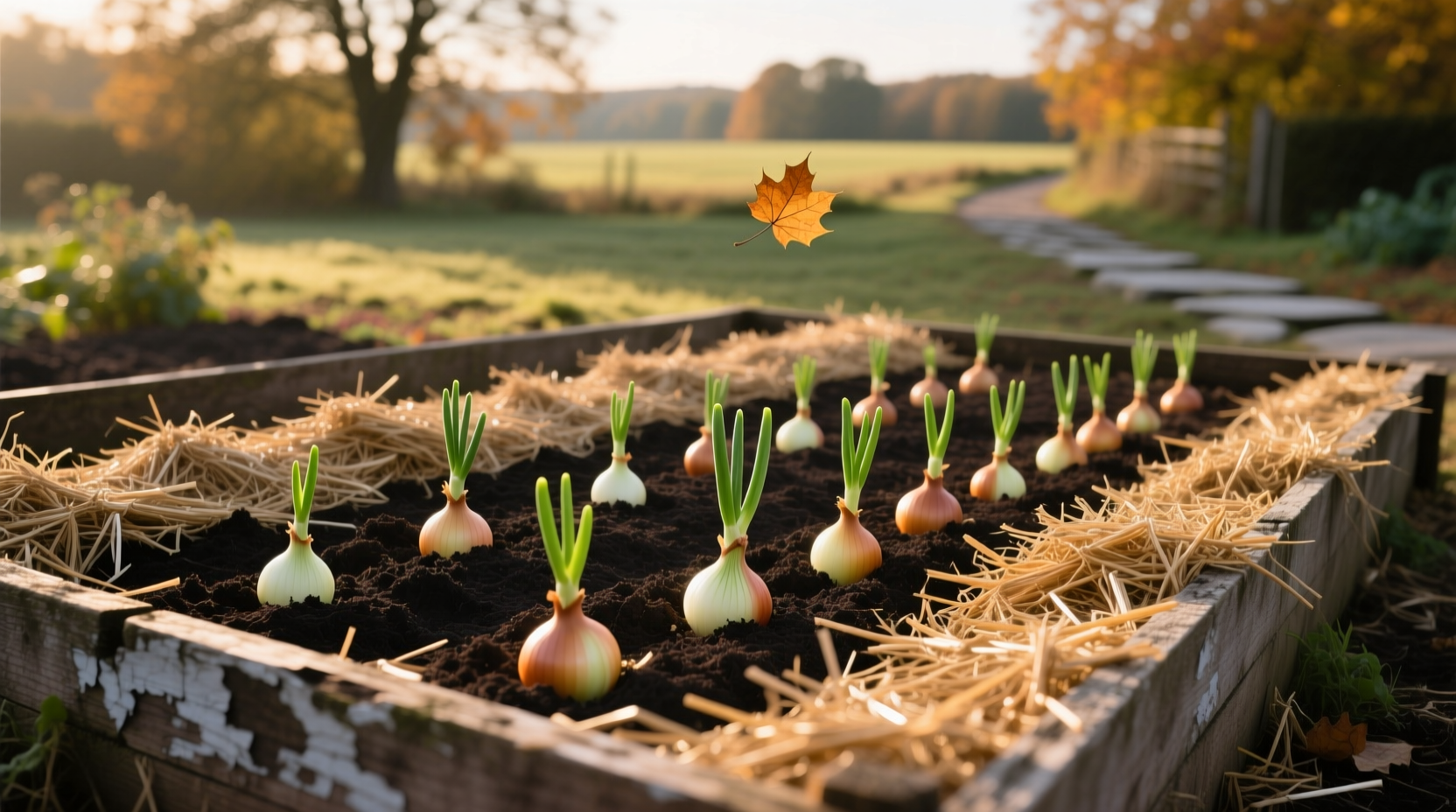Timing fall onion planting correctly transforms your harvest. Unlike spring-planted onions, fall-planted sets develop stronger root systems before winter dormancy, resulting in larger bulbs with better storage potential. Research from University of Minnesota Extension shows properly timed fall planting increases average bulb size by 25-30% compared to spring planting in zones 5-7.
Why Fall Planting Beats Spring for Onions
Fall-planted onions establish roots before winter dormancy, giving them a head start come spring. This extended growing period creates:
- 20-30% larger bulb size on average
- Improved disease resistance from stronger root development
- Earlier harvest dates (typically 2-3 weeks sooner)
- Better storage capability due to thicker skin formation
The USDA Agricultural Research Service confirms that onions planted in fall develop more uniform bulb shapes and higher sugar content, creating that perfect sweet-onion flavor profile.
Best Onion Varieties for Fall Planting
Not all onions thrive when planted in fall. Short-day and intermediate-day varieties respond best to fall planting schedules. Here's how they compare:
| Variety Type | Best Zones | Day Length Trigger | Harvest Time | Storage Life |
|---|---|---|---|---|
| Short-Day (Texas Early White, Vidalia) | 6-9 | 10-12 hours | May-June | 2-3 months |
| Intermediate-Day (Candy, Super Star) | 5-7 | 12-14 hours | June-July | 4-6 months |
| Long-Day (Walla Walla, Yellow Sweet Spanish) | 3-5 | 14-16 hours | July-August | 6-8 months |
Note: Long-day varieties generally don't work well for fall planting except in northern zones 3-5. Short-day varieties planted too far north often bolt before forming proper bulbs.
Precise Planting Timeline by Climate Zone
Planting too early invites disease; too late prevents root establishment. Use this zone-specific timeline:
- Zones 3-4: Plant September 1-15 (4-6 weeks before first frost)
- Zones 5-6: Plant September 15-October 15
- Zones 7-8: Plant October 1-November 15
- Zones 9-10: Plant November 1-December 15
The USDA Plant Hardiness Zone Map helps determine your exact zone. In borderline zones (like 6b/7a), plant half your crop early in the window and half later to hedge against unpredictable frosts.
Step-by-Step Fall Planting Process
Soil Preparation (3 Weeks Before Planting)
Onions need loose, well-draining soil with pH 6.0-6.8. Amend heavy soils with 3 inches of compost and 1 inch of coarse sand. Avoid fresh manure which causes forked roots. The Oregon State University Extension recommends adding 1 lb of 10-10-10 fertilizer per 100 square feet during preparation.
Planting Day Checklist
- Choose sets with diameters between ¼-½ inch (larger sets often bolt)
- Plant sets 1-2 inches deep with pointed end up
- Space plants 4-6 inches apart in rows 12-18 inches apart
- Water immediately after planting with ½ inch of water
- Apply 2-3 inches of straw mulch once soil cools to 50°F
Winter Protection Strategies
Proper mulching prevents heaving from freeze-thaw cycles. Apply 3-4 inches of straw or shredded leaves after soil temperature drops below 50°F but before hard freezes. The University of Wisconsin Extension found that mulched plantings had 92% survival rates compared to 67% for unmulched plots in zone 5.

Spring Care for Fall-Planted Onions
As temperatures warm in spring:
- Remove mulch gradually when soil reaches 40°F
- Apply nitrogen fertilizer when plants reach 6 inches tall
- Water consistently (1 inch per week) during bulb formation
- Stop watering 2-3 weeks before harvest to cure bulbs
Watch for bolting (flower stalks), which indicates stress. Remove flower stalks immediately to redirect energy to bulb development. Fall-planted onions are more prone to bolting if exposed to temperatures below 45°F for extended periods after spring growth begins.
Troubleshooting Common Issues
Poor overwintering survival: Usually caused by late planting or inadequate mulching. In zones 5 and colder, plant at least 6 weeks before first frost.
Bolting: Caused by temperature fluctuations or planting sets too large. Use sets under ½ inch diameter and avoid planting during warm spells.
Small bulbs: Often results from overcrowding or insufficient spring nutrition. Thin plants to 6 inches apart if needed and apply balanced fertilizer during rapid growth phase.
Harvesting Your Fall-Planted Onions
Harvest when tops naturally fall over and yellow (typically late spring to early summer). Cure bulbs for 7-10 days in a warm, dry, shaded area with good airflow before storing. Fall-planted onions typically mature 10-14 days earlier than spring-planted crops.
Store cured onions in mesh bags in a cool (32-40°F), dry (65-70% humidity) location. Intermediate-day varieties store best, often lasting 5-6 months under proper conditions.











 浙公网安备
33010002000092号
浙公网安备
33010002000092号 浙B2-20120091-4
浙B2-20120091-4